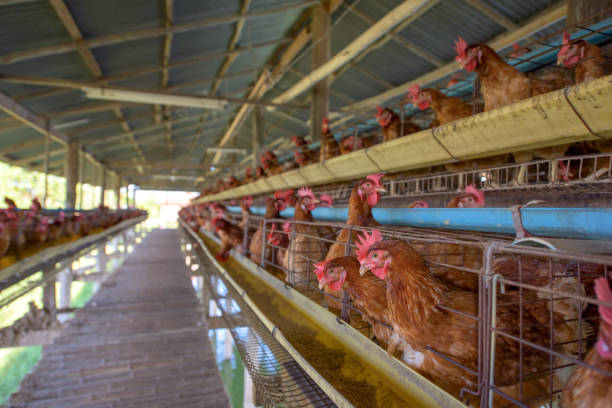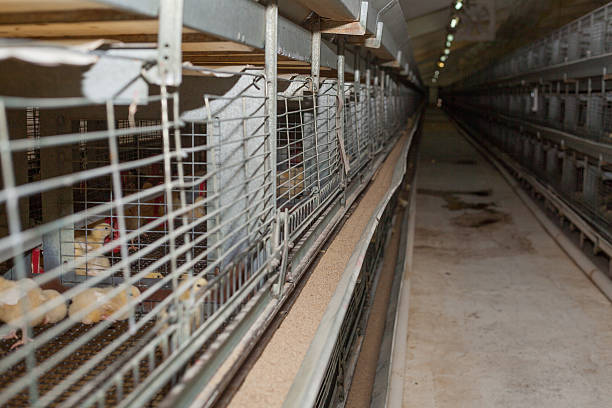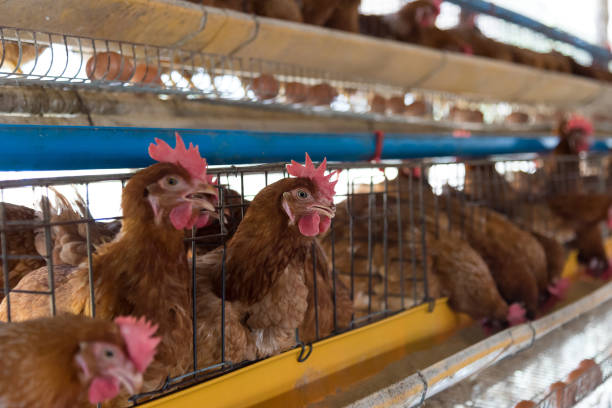Automated Layer House for 250,000 Chickens in Pakistan: Maximizing Efficiency
Automated Layer House for 250,000 Chickens in Pakistan: Maximizing Efficiency
Pakistan’s poultry industry is on the rise, driven by increasing demand for affordable protein. To meet this demand efficiently and sustainably, poultry farmers are increasingly turning to automated layer houses. This article explores the benefits, considerations, and technologies involved in establishing an automated layer house for 250,000 chickens in Pakistan, with a focus on maximizing efficiency and profitability.
Why Automate? The Case for Efficiency
Traditional poultry farming methods are labor-intensive and often result in lower productivity and higher operational costs. Automation offers a compelling alternative by streamlining various processes, reducing reliance on manual labor, and improving overall efficiency. In a large-scale operation like one housing 250,000 layers, the advantages of automation become even more pronounced.
Increased Egg Production: Automated systems ensure consistent feed and water supply, optimal temperature and humidity control, and effective waste management. These factors contribute to a healthier environment for the chickens, resulting in higher egg production rates and improved egg quality. When you consider the sheer volume—250,000 hens—even a slight improvement in egg production per hen translates into a significant increase in overall output.
Reduced Labor Costs: Automation significantly reduces the need for manual labor in various tasks such as feeding, watering, egg collection, and waste removal. This translates into substantial savings in labor costs, which can be a major expense in traditional poultry farming. In Pakistan, where labor costs can fluctuate, automation provides a more predictable and manageable cost structure.
Improved Biosecurity: Automated systems minimize human contact with the chickens, reducing the risk of disease transmission. Controlled environments, coupled with automated cleaning and disinfection systems, further enhance biosecurity, protecting the flock from outbreaks and related economic losses. In a densely populated layer house, preventing disease is paramount.
Enhanced Data Collection and Analysis: Modern automated systems incorporate sophisticated data collection and analysis tools. These tools monitor various parameters such as egg production, feed consumption, temperature, humidity, and water usage. By analyzing this data, farmers can gain valuable insights into the health and performance of their flock, allowing them to make informed decisions to optimize production and minimize waste. This data-driven approach is key to maximizing efficiency and profitability.
Choosing the Right Automation System: Key Considerations
Selecting the right automation system is crucial for the success of an automated layer house. There are several factors to consider when making this decision.
Type of Housing System: Layer houses typically utilize either cage systems or cage-free systems. Cage systems, such as A-frame and H-frame cages, offer higher stocking densities and easier management, leading to higher egg production. Cage-free systems, on the other hand, provide more space for the chickens to move around, which can improve animal welfare but may also require more space and management. The choice between cage and cage-free depends on market demands, regulatory requirements, and the farmer’s preferences. It’s important to note that even within cage-free systems, automation plays a significant role in optimizing feeding, watering, and egg collection.
Climate Considerations: Pakistan experiences a wide range of climatic conditions, from hot and humid summers to cold and dry winters. The automation system must be designed to effectively regulate temperature and humidity within the layer house, regardless of the external weather conditions. This may involve incorporating cooling systems, heating systems, and ventilation systems to maintain an optimal environment for the chickens. Insulation is also critical.
Power Supply and Reliability: Reliable power supply is essential for the operation of an automated layer house. Power outages can disrupt critical processes such as feeding, watering, and ventilation, which can negatively impact egg production and chicken health. It’s important to have backup power generators in place to ensure continuous operation during power outages. Furthermore, the automation system should be designed to be energy-efficient to minimize operating costs.
Local Support and Expertise: When selecting an automation system, it’s important to consider the availability of local support and expertise. This includes access to qualified technicians for installation, maintenance, and repairs. A reliable supplier who can provide prompt and efficient service is crucial for minimizing downtime and maximizing the lifespan of the automation system. Livi Machinery can provide comprehensive pre-sales and after-sales support, along with on-site installation guidance.
Budget and Return on Investment (ROI): The initial investment in an automated layer house can be significant. It’s important to carefully evaluate the costs and benefits of different automation systems and select one that offers the best ROI. Factors to consider include egg production rates, feed conversion ratios, labor costs, energy consumption, and maintenance expenses. A detailed financial analysis can help farmers make informed decisions about their investment.
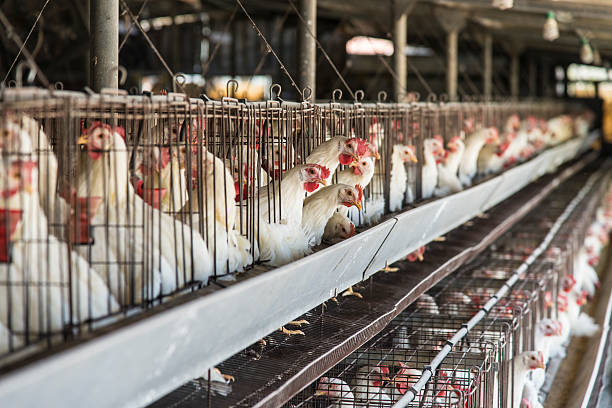
Essential Automation Technologies for a 250,000-Layer House
Several key technologies contribute to the efficient operation of an automated layer house.
Automated Feeding Systems: These systems deliver feed to the chickens at pre-determined intervals and in precise quantities. This ensures that all chickens receive adequate nutrition, minimizing feed waste and maximizing egg production. Different types of feeding systems are available, including chain feeding systems, auger feeding systems, and traveling hopper systems. The choice of system depends on the type of housing system and the farmer’s preferences.
Automated Watering Systems: Clean and readily available water is essential for the health and productivity of chickens. Automated watering systems, such as nipple drinkers and cup drinkers, provide a continuous supply of fresh water while minimizing spillage and contamination. Regular cleaning and disinfection of the watering system are important to prevent the spread of diseases.
Automated Egg Collection Systems: Automated egg collection systems gently collect eggs from the cages or laying nests and transport them to a central collection point. This reduces the risk of egg damage and contamination, while also saving significant labor costs. Different types of egg collection systems are available, including belt conveyors and robotic systems.
Automated Manure Removal Systems: Effective manure removal is crucial for maintaining a clean and hygienic environment in the layer house. Automated manure removal systems, such as scraper systems and belt conveyor systems, remove manure from the house on a regular basis, reducing odor, ammonia levels, and the risk of disease. This minimizes the need for manual labor and contributes to a healthier environment for the chickens.
Climate Control Systems: Maintaining optimal temperature and humidity levels is crucial for egg production and chicken health. Climate control systems, including ventilation fans, cooling pads, heating systems, and fogging systems, regulate the environment within the layer house to ensure optimal conditions for the chickens. These systems are typically controlled by sensors and thermostats, which automatically adjust the settings based on the temperature and humidity levels.
Lighting Systems: Controlled lighting is essential for regulating the laying cycle of hens. Automated lighting systems provide consistent and uniform lighting throughout the layer house, stimulating egg production. Different types of lighting systems are available, including LED lights and fluorescent lights. The lighting program can be adjusted to optimize egg production based on the age and breed of the chickens.
Ventilation Systems: Proper ventilation is crucial for removing stale air, moisture, and ammonia from the layer house. Ventilation systems, including exhaust fans and air inlets, provide a constant flow of fresh air, improving air quality and reducing the risk of respiratory diseases. The ventilation rate should be adjusted based on the temperature, humidity, and stocking density.
Biosecurity Measures: Protecting the flock from disease is paramount. Implement strict biosecurity protocols, including controlling access to the farm, disinfecting equipment and vehicles, and implementing vaccination programs. Automated disinfection systems can be used to sanitize the layer house and reduce the risk of disease transmission.
Data Management Systems: Modern automation systems generate a wealth of data on egg production, feed consumption, water usage, temperature, humidity, and other parameters. Data management systems collect, analyze, and present this data in a user-friendly format, allowing farmers to monitor the performance of their flock and make informed decisions to optimize production. These systems can also be used to track key performance indicators (KPIs) and identify areas for improvement.
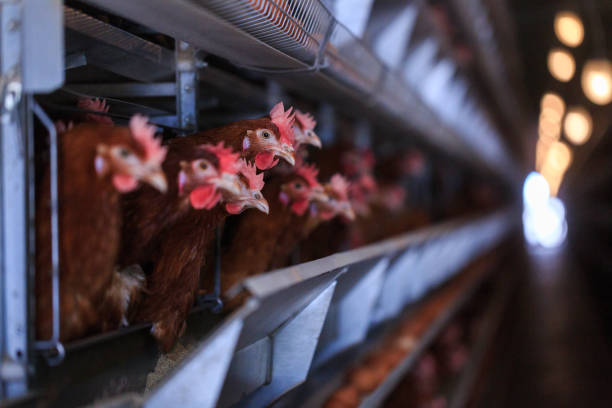
Challenges and Mitigation Strategies
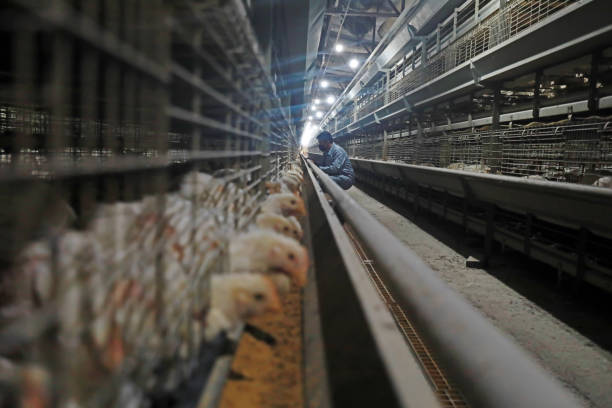
Establishing an automated layer house in Pakistan can present certain challenges.
Initial Investment Costs: The initial investment in an automated layer house can be significant. To mitigate this challenge, farmers should carefully evaluate the costs and benefits of different automation systems and select one that offers the best ROI. They should also explore financing options, such as loans and grants, to help cover the initial investment costs.
Technical Expertise: Operating and maintaining an automated layer house requires specialized technical expertise. To address this challenge, farmers should invest in training for their staff and seek support from qualified technicians. Partnering with a reputable supplier who can provide ongoing technical support is also crucial. Livi Machinery, for example, provides comprehensive training and support to its customers.
Power Supply Reliability: Unreliable power supply can disrupt the operation of an automated layer house. To mitigate this challenge, farmers should invest in backup power generators and explore alternative energy sources, such as solar power. They should also work with local utilities to improve the reliability of the power grid.
Environmental Concerns: Poultry farming can have a significant environmental impact, particularly in terms of manure management and air emissions. To mitigate these concerns, farmers should implement sustainable farming practices, such as composting manure and using air scrubbers to reduce ammonia emissions.
Market Fluctuations: Egg prices can fluctuate significantly, which can impact the profitability of an automated layer house. To mitigate this risk, farmers should diversify their markets and explore value-added products, such as processed eggs.
Conclusion: The Future of Layer Farming in Pakistan
Automated layer houses represent the future of poultry farming in Pakistan. By embracing automation, farmers can significantly improve efficiency, reduce costs, and enhance profitability. While there are challenges to overcome, the benefits of automation far outweigh the costs. As the demand for affordable protein continues to grow, automated layer houses will play an increasingly important role in meeting the needs of the Pakistani market. With careful planning, investment, and ongoing support, farmers can successfully establish and operate automated layer houses, contributing to the growth and sustainability of the poultry industry in Pakistan. Livi Machinery remains committed to providing high-quality poultry equipment and comprehensive support to help farmers achieve their goals. We are here to provide professional solutions to suit your poultry farming needs.



